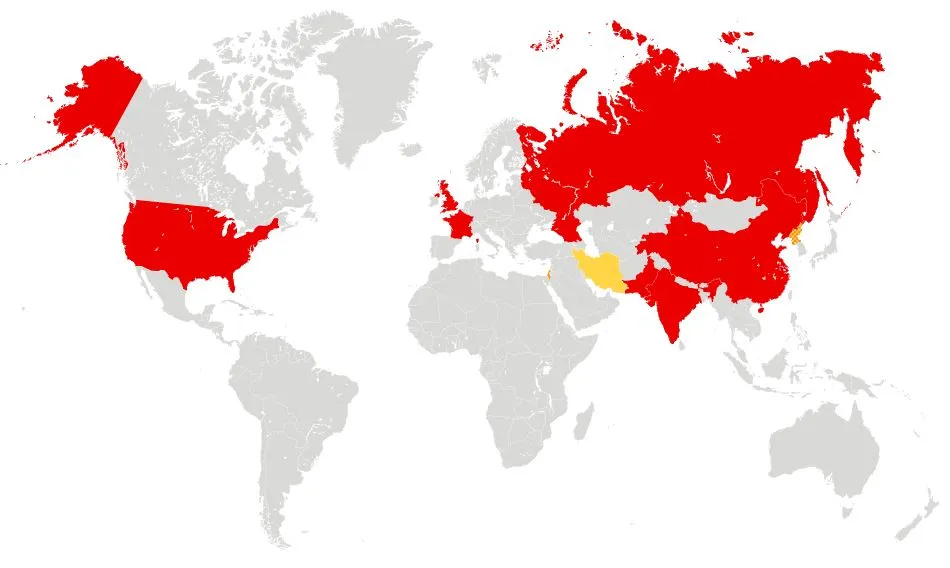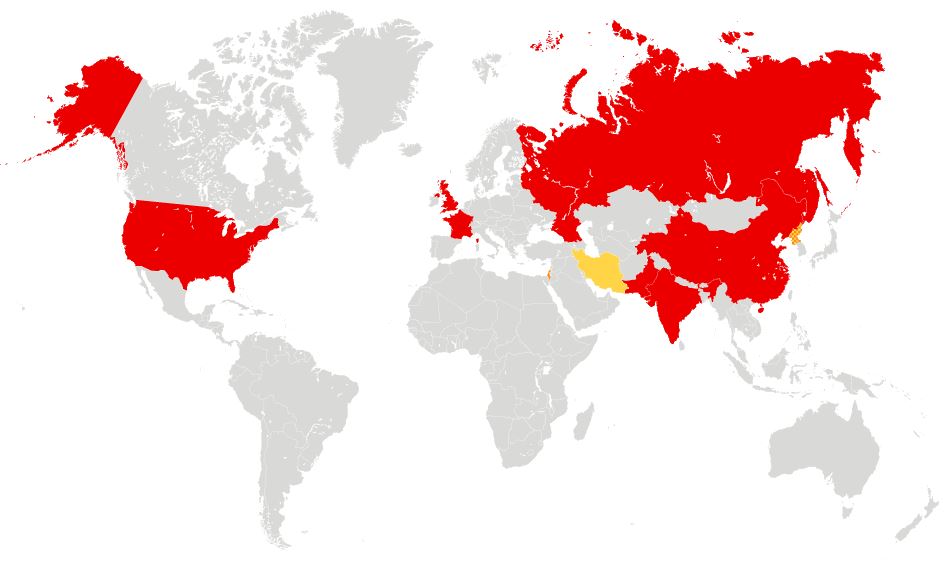
#Ideas
Map Showing Who Has A Nuclear Weapon
With unstable situation in the Korean Peninsula CNN presented a simple map which shows who has what in a nuclear weapon world. Click on the map to go to CNN’s website:
| COUNTRY | FIRST TEST | MOST RECENT TEST | TOTAL TESTS | ESTIMATED WARHEADS |
|---|---|---|---|---|
| United States | 1945 | 1992 | 1,054 | 7,650 |
| Russia | 1949 | 1990 | 715 | 8,420 |
| United Kingdom | 1952 | 1991 | 45 | 225 |
| France | 1960 | 1996 | 210 | 300 |
| China | 1964 | 1996 | 45 | 240 |
| India | 1974 | 1998 | 6 | 80-100 |
| Pakistan | 1998 | 1998 | 6 | 90-110 |
| North Korea | 2006 | 2013 | 3 | < 10 |
| Israel | No confirmed | No confirmed | No confirmed | 80 |
| Iran | No confirmed | No confirmed | No confirmed | 0 |


#Ideas
#Featured
#GeoAI
#Ideas
Google Earth AI Launch Marks a Turning Point for Enterprise GeoAI
#GeoDev
#Ideas
Foundation Models for EO: How to Start?
#Contributing Writers
#GeoDev
#Ideas
Maximizing the Potential of SAR Analysis with InSAR Explorer





